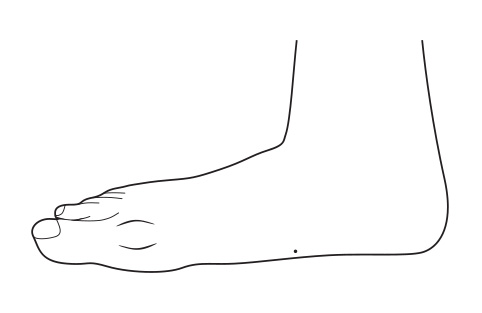Progress
- Principal activity velocity[ Edit ]Result:
- Foot pronation force (supination resistance)[ Edit ]Left foot: Right foot:
- Big toe force test (modified jacks test)[ Edit ]Left foot: Right foot:
- Touch the toes[ Edit ]Left foot: Right foot:
- Lunge test[ Edit ]Left foot: Right foot:
- Everson fascial cord tension[ Edit ]Left foot: Right foot:
- Big toe assessment[ Edit ]Left foot: Right foot:
- Weight bearing arch height[ Edit ]Left foot: Right foot:
- Non-weight bearing arch height[ Edit ]Left foot: Right foot:
- Hyperextended knees observation[ Edit ]Left foot: Right foot:
- Too many toes[ Edit ]Result:
- Abductory twist observation[ Edit ]Left foot: Right foot:
- Heel soft tissue gradient[ Edit ]Left foot: Right foot:
Weight bearing arch height
8 of 13 [ View / Edit ]
Non-weight bearing

Weight bearing (the dot represents previous arch apex position)
Method
This test is done with the customer sitting with the foot suspended.
- Place index and middle finger on top of the big toe joint to stabilise it. Place the thumb under the tip of the big toe.
- Start bending the big toe upwards (to about 45°) and assess the force required for the fascial cord to become obvious. You can use your other hand to feel the fascial cord pop out.
- Having assessed the force required for the fascial band to become obvious, select Low, Medium or High (for each foot).